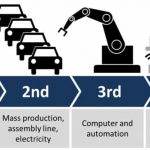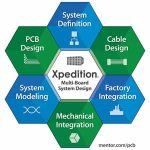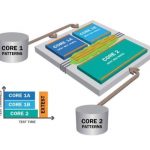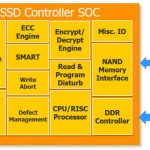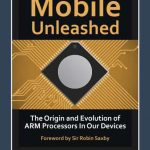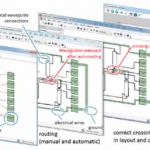Product lifecycle management is probably not the most gripping topic for most design engineers. You want to get on with architecture, design, verification and implementation. But if you are building products for any safety-sensitive application in a car, a medical appliance, avionics, railway applications in Europe – to name… Read More
Manufacturing Singularity is Comng!
One of the many benefits of blogging is that you get to meet some very interesting people. This time I had the pleasure of speaking with Michael Ford of Mentor Graphics about Industry 4.0 and smart factories. In fact, Mentor has an excellent series of white papers titled “Is This a Manufacturing Revolution?” from their Valor Division,… Read More
Automation for managed system-of-systems design
Anybody who has done any bus & board system design knows the problem. Merchant boards typically have standardized pinouts (after years of haggling in standards organizations) for the backplane bus, and a group of user-defined pins for daughtercard I/O. Homegrown systems usually have a just-as-carefully defined proprietary… Read More
DFT Approaches for Giga-gate SoC Designs
In the early days of IC design there were arguments against using any extra transistors or gates for testability purposes, because that would be adding extra silicon area which in turn would drive up the costs of the chip and product. Today we are older and wiser, realizing that there are product pricing benefits to quickly test each… Read More
New Frontiers in the Storage System Market Call for the Best of ICE and Virtual Emulation
The storage market has reached what Andy Grove once described as “…a strategic inflection point.”[1] This is the stage in the life of a business when its fundamentals are about to change.
Changing fundamentals in the storage market—where solid state drives (SSD) are now at the forefront of multiple storage applications,… Read More
ARM and SoftBank: A Joint Vision of the Future!
Next week is ARM TechCon and I’m extra excited about this one because of the SoftBank acquisition. In fact, the opening keynote says it all. ARM CEO Simon Segar and SoftBank CEO Masayoshi Son will discuss the next chapter in the book of ARM. To better prepare for this keynote you should probably read our book “Mobile Unleashed: The … Read More
Low power physical design in the age of FinFETs
Low power is now a goal for most digital circuit designs. This is to reduce costs for packaging, cooling, and electricity; to increase battery life; and to improve performance without overheating. I talked to the experts on physical design for ultra-low power at Mentor Graphics recently about the challenges to P&R tools and… Read More
Making photonic design more straightforward
The arrival of optical computing has been predicted every year for the last fifteen years. As with any other technology backed by prolific research, lofty goals get dialed back as problems are identified. What emerges first is a set of use cases where the technology fits with practical, realizable implementations.
When it comes… Read More
Market Trends Motivate a Shift-Left in Functional Verification
Today, in the context of functional verification, industry trends are based on the needs of prominent vertical markets. There is some overlap in what these markets need, but there are some use models that are very specific to each market.
We assert this because we have a lot of customers asking about emulation solutions not from … Read More
Mentor Functional Verification Study 2016
Periodically, Mentor commissions a user/usage survey on Functional Verification, conducted by the Wilson Research Group, then they publish the results to all of us, an act of industry good-citizenship for which I think we owe them a round of thanks. Harry Foster at Mentor is breaking down the report into a series of 15 blogs. He’s… Read More



